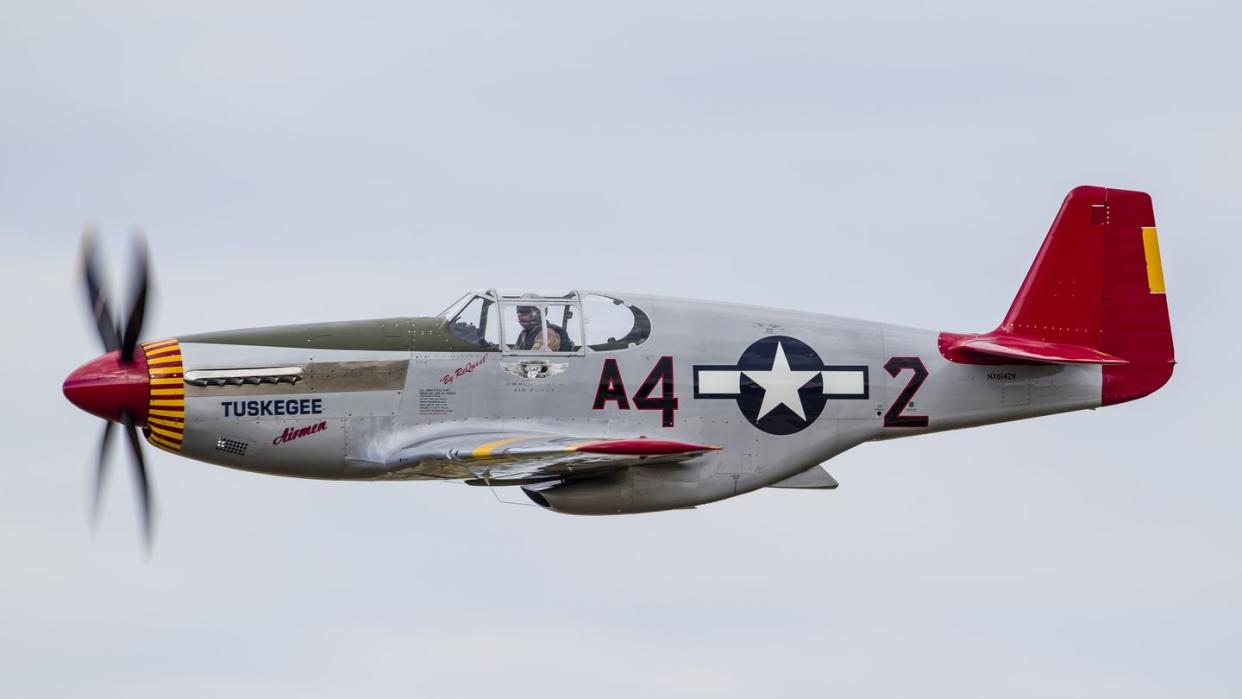Divers Recovered the Engine of a Tuskegee Warplane From the Depths of Lake Huron

Pieces of a downed Tuskegee Airmen P-39 fighter plane wreckage are being hauled from Lake Huron to preserve history at the Tuskegee Airmen National Historical Museum.
The Tuskegee Airmen were the nation’s first all-Black air fighter squadron, and were known for excellence in the skies during World War II.
Michigan served as a key training home for the pilots, though they were based in Tuskegee, Alabama.
An important chunk of American military aviation history sits engulfed by Lake Huron’s cold waters. That’s all changing thanks to a team mining the lake to pull up pieces of World War II-era fighter planes flown by the Tuskegee Airmen, with the plan to restore them as part of the Tuskegee Airmen National Historical Museum in Detroit.
The first all-Black air fighter squadron rose to prominence in World War II. Known officially as the 332nd Fighter Group of the U.S. Fifteenth Air Force, the Tuskegee Airmen—also known as Red-Tails for the paint on their P-51 Mustangs—were considered some of the most daring and talented fighter pilots for the U.S., routinely undertaking the dangerous job of escorting bombers through German skies. They flew more than 15,000 individual sorties and roughly 1,500 combat missions in World War II, including nearly 200 escort missions between the more than 320 pilots in the group. They lost just 27 bombers in total, well below the average of 46.
Though based in Tuskegee, Alabama, the crew trained in Michigan. It’s there an estimated 15 airmen lost their lives, including five in Lake Huron. One of those young pilots was 2nd Lt. Frank Moody, 22, of Los Angeles. On April 11, 1944, experts believe his machine guns malfunctioned, causing his plane to go down. “For whatever reason the guns went out of sync, and so when the pilot pulled the trigger, the bullets ripped off one propeller blade and damaged another,” Wayne Lusardi, the state maritime archaeologist for Michigan, told Live Science. “And he was only about 50 feet above the lake, so it was all over.”
The crash was likely at more than 200 miles per hour and about one mile offshore.
“Because the engine is intact, you know it crashed very shallow in the lake,” Isis Gillespie, the museum’s conservator of the P-39 told the AP, “and it was in fresh water, so it helped preserve it a lot more. This find is so important for Black history to find out how Tuskegee airmen fought for this country and how they fought a war at home.”
Months after the 1944 crash, Moody’s body washed ashore, but his fighter wasn’t seen again until 2014, and the museum didn’t start a recovery process until 2018.
“They came across what looked like a car door, and wondered why there was a car door on the lake floor,” Lusardi told Live Science. “And it turned out that it was from a P-39.”
Crews have already salvaged the tail, guns, gauges, and munitions. A recent effort brought the 1,200-pound engine to the surface. “It’s broken, spread out over almost a half-a-mile underwater and consists of thousands of pieces,” Lusardi told the AP. “There’s still a good amount of the plane that’s still on the bottom.” The propellor was also found, showing off the holes from the guns.
Preservation of the engine—which remained intact even after the crash—has begun, and the effort continues to pull more 80-year-old wreckage from the lake as a way to preserve Tuskegee Airmen history, including a pair of 32-foot-long wings.
Experts believe that three additional Tuskegee planes remain underwater in Lake Huron. “Tuskegee Airmen are known for their valor and excellence in fighting the Germans in the air war over Germany in World War II,” Lusardi told the AP. “But what we haven’t heard about is the accidents in training that the airmen suffered.”
You Might Also Like


